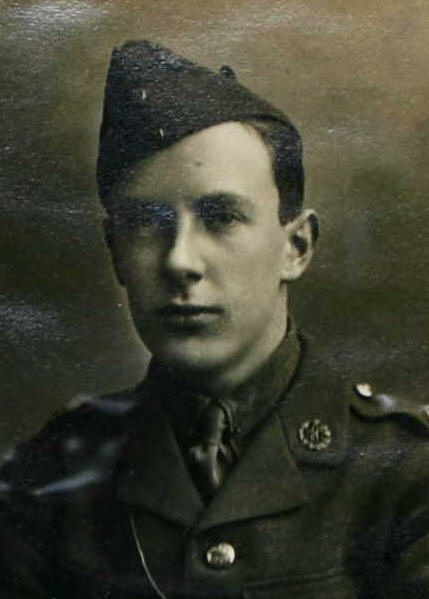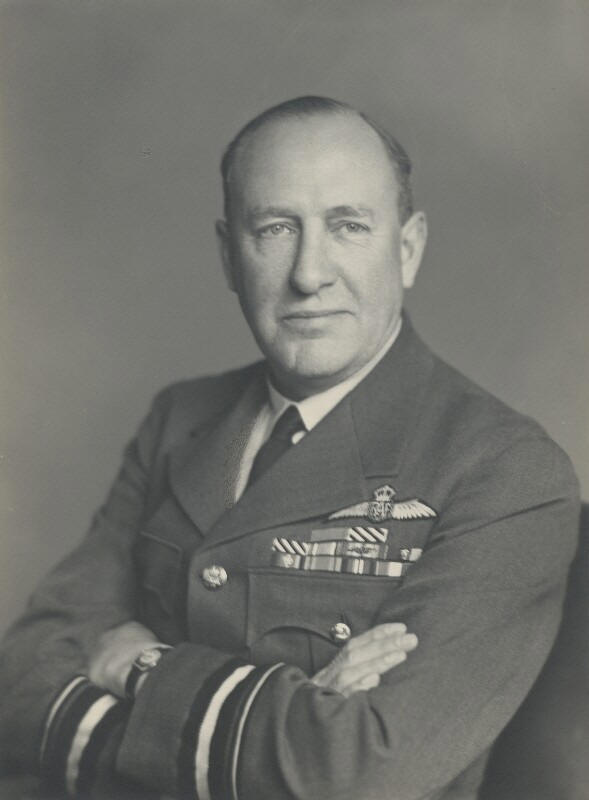bromide print, November 1948
NPG x185833
© National Portrait Gallery, London
Air of Authority - A History of RAF Organisation
Air Vice Marshal S F Vincent (09109)

 Stanley Flamank
Stanley Flamank
b: 7 Apr 1897
r: 6 Feb 1950
d: 13 Mar 1976
CB -
1 Jan 1945, DFC - 2 Nov 1918, AFC -
2 Nov 1918, LoM (Cdr) - 15 Feb 1949, DL (Suffolk) –
16 Sep 1962.
(Army):-
2 Lt (P): 7 Dec 1915, Lt:
1 Jan 1917, (T) Capt: 1 Mar 1917.
(RAF):-
(T) Capt [Lt]: 1 Apr 1918, Fg
Off: 1 Aug 1919, Flt Lt: 30 Jun
1922 [1 Apr 1918], Sqn Ldr: 30 Jun
1931, Wg Cdr: 1 Jan 1937,
(T) Gp Capt: 1 Mar 1940, Act A/Cdre: xx
xxx 1941,
Gp Capt: 14 Apr 1942 [1 Mar 1940],
(T) A/Cdre: 1 Jun 1942, Act
AVM: 18 Oct 1944 - 12 Jun 1945; 16 Aug 1945, (T) AVM: 1 Jan
1946, A/Cdre: 1 Jan 1946, AVM: 1 Jul 1947.
Photo (Far left) - taken from his RAeC Certificate
Photo (left) -
© National Portrait Gallery, London
30 Aug 1915:
U/T Pilot, No 2 Reserve Sqn RFC.
22 Mar 1916: U/T Pilot, CFS
28 May 1916: Pilot, No 60 Sqn RFC.
29 Jun 1916: Attached to No 2 Aircraft Depot
6 Jul 1916: Attached to No 1 Aircraft Depot
8 Jul 1916:
Pilot, No 60 Sqn RFC.
25 Nov - 10 Dec 1916: Temporary duty in Paris
28 Jan 1917: Attended Aerial Musketry Course
5 Feb 1917: Returned to Home Establishment
1 Mar 1917: Flight Commander,
No 1 Reserve Sqn.
29 Apr 1917: Admitted
to RN Hospital, Haslar - Convalescing.
1 Nov 1917: Flight Commander, No 110 Sqn RFC.
xx xxx 1918: Flight Commander, Special Instructor’s Flight, Shoreham.
xx May 1918?: Flight Commander, South East Area Flying Instructor School.
xx xxx 1918:
Ferrying captured aircraft
xx xxx 1918: Flight Commander, No 24 Sqn.
23
Aug 1919: Transferred
to Unemployed List
19 Oct 1920: Granted a Short Service Commission in the rank of Flying Officer.
21 Oct 1920: Flight Commander, ‘B’ Flight, RAF (Cadet) College.
6 Apr 1922: Short Service Commission extended to seven years on the Active List
28 Nov 1922: Granted a Permanent Commission in rank of Flying Officer. (wef 19 Oct 1920)
14 Sep 1923: Flight Commander, No 30 Sqn.
14 Feb 1924: Flight Commander, No 32 Sqn
12 Dec 1925: Staff, Heliopolis Details
1 Jan 1926:
Flight Commander, HQ Communications Flight, Heliopolis Details.
21 Jan 1926: Officer, No 2 Armoured Car Company.
30 Jan 1928: Flight Commander, No 1 Sqn.
8 Nov 1928: Awarded a CFS category of 'B1' as a flying instructor.
7 Feb 1929: Recategorised as a flying instructor from 'B1' to 'A2'
7 Jul 1931:
Supernumerary, No 41 Sqn.
24 Oct 1931:
Officer Commanding, No 41 Sqn.
29 Apr 1933: Officer Commanding (designate?), No 84 Sqn.
26 May 1933: Officer Commanding, No 84 Sqn.
30 Jan 1935: Repatriated to UK to convalesce from malaria
5 Mar 1935: Attended Air Armament School.
1 Jan 1936:
Officer Commanding, Air Fighting Development Unit, RAF Northolt.
20 Nov 1937: Officer Commanding, RAF Northolt.
3 Jan 1938:
Training (Armament) Staff Officer, Directorate of Training.
10 Jan 1939: Attended RN Staff College.
26 Aug 1939: Operations Officer, HQ No 15 (Reconnaissance) Group
14 Jan 1940: Officer Commanding, RAF Northolt.
14 Nov - 19 Dec 1940 Non-effective, sick (wounded in action)
xx Mar 1941: Officer Commanding, RAF North Weald.
xx Jul 1941:
Group Captain – Operations, HQ No 11 (Fighter) Group.
xx xxx 1941: Officer Commanding
(Temporary), RAF Biggin Hill.
xx xxx 1941: Duty Air Commodore, HQ Fighter Command.
13 Feb 1942: AOC, No 226 (Fighter) Group.
14 Apr 1942: Attached to HQ RAAF to assist with organisation a Air Defence Force
xx Oct 1942:
DCAS, RNZAF.
xx Mar 1943: Served in USA.
xx xxx 1943: Duty Air Commodore, HQ Fighter Command.
15 Nov 1943: AOC, No 13 (Fighter) Group.
17 Feb 1944: AOC, No 221 Group.
16 Aug 1945: SASO, HQ Fighter Command.
1 Jun 1948:
AOC, No 11 (Fighter) Group.
Educated at Lancing College, Stanley
Vincent’s earliest experience of aircraft was in 1910, when on holiday with
his family, they made the acquaintance of Mr. H H Piffard at Shoreham.
However, his own opportunity to fly came with the outbreak of WW1 and in
early 1915, he was accepted for training in the RFC, but it was near the end of
the year before he was called up to begin his flying training at Brooklands.
Granted his commission after completing twelve hours solo he then
attended the Central Flying School where he gained his ‘Wings’.
Further training at Gosport was followed by a posting to France,
initially to No 1 Aircraft Depot, but due to the loss of their CO, he was almost
immediately posted to No 60 Squadron. No
60 was equipped with Morane single seat and two seaters, with Vincent being
appointed to the ‘A’ Flight equipped with the Morane Bullet scout.
On one of his earliest patrols, he successfully shot down an enemy
aircraft, thereby claiming the first victory for 60 Squadron.
Having
served under Major Smith-Barry in No 60 Squadron, it was not surprising that
when Smith-Barry returned to England to put his ideas on flying training into
practice at the School of Special Flying at Gosport, Stanley Vincent should
accompany him as his deputy. The
School of Special Flying taught new pilots using dual control aircraft equipped
with speaking tubes and put the trainee pilots into situations previously
considered too dangerous such as spinning.
However, Smith-Barry proved that if pilots are taught how to get out such
manoeuvres they would be less likely to kill themselves should they
inadvertently get into the situation. He
also developed a standard form of verbal instructions, known as 'the patter’,
this method of training soon became the accepted norm and remains the basis of
all flying training to the present day. However, after less then two months at Gosport, Stanley
Vincent was seriously injured when his aircraft broke up in mid air.
He survived the crash being unconscious for four days followed by a
further seven months in hospital and convalescence.
At the beginning of November 1917, having
recovered, he was posted as the first member and flight commander tasked
with the formation of a new squadron, No 110.
At the end of the month he handed command to the squadron’s first CO
(Maj H R Nicholl) and was
posted to Shoreham in order to form another Flying Instructor’s School on the
same lines as Gosport.
Shortly
after the Armistice he received one the first AFC’s to be awarded for his work
as an Instructor. With the run down
of the service he was sent to France to bring back captured German machines and
then joined No 24 Squadron where he gave refresher course to repatriated
POW’s. He was also involved in
the training of the Prince of Wales at this time.
In August 1919 he was transferred to the Unemployed List but soon afterwards
re-joined the RAF. Two years later he became a flight commander at the newly opened RAF
College at Cranwell, which he represented in the annual RAF Pageant at Hendon.
He
finally returned to operations in 1923 when he was posted to Iraq as a flight
commander in No 30 Squadron flying DH9A’s on air control duties.
Posted to Egypt at the end of 1925, he was appointed CO of the HQ
Communications Flight but three weeks later transferred to No 2 Armoured Car
Company in Palestine. In 1928 his
overseas posting ended and he returned to fighters as flight commander of No 1
Squadron at Tangmere flying Siskins. His
eleven years as a Capt/Flight Lt came to an end in 1931, when he was promoted to
Squadron Leader and appointed to command of No 41 Squadron at Northolt, also
equipped with Siskins. With 41 he
was involved in the early experiments with R/T (Radio Telephony) as opposed to
W/T (Wireless Telegraphy). When the
CO of No 84 Squadron was returned home through illness, Stanley Vincent found
himself on his way back to Iraq as his replacement.
Equipped with the Westland Wapiti, 84 was based at Shaibah in the desert,
450 miles South of his previous station, Kirkuk.
Whilst commanding 84, he took part in the first reinforcement flight to
Singapore, an indicator for the future. In
late 1934, he was taken ill with malaria and was sent home at the end of January
1935.
Recovered,
he attended the Air Armament School at Eastchurch after which he submitted a
paper on the need for the AFDU to be commanded by a qualified Armament Officer
and was promptly given the post. Promoted
to Wing Commander, his first duty was to arrest his Station Commander at
Northolt on the orders of the AOC, Fighting Area and to take over from him as OC,
RAF Northolt. A spell at the Air
Ministry was followed by attendance at the Royal Navy Staff College, Greenwich
and then a post in the Combined HQ at Plymouth.
Promotion to Group Captain brought a return to Northolt as CO, commanding
this station throughout the Battle of Britain, he often accompanied his
squadrons on active operations. During
one operation he attacked 18 Dorniers head on, they were so close together he
was able to shoot down five of the bombers, although
these were never confirmed. During another action he was hit, crash landing at Kenley he later had
forty pieces of shrapnel removed from his back having narrowly missed his spine.
This made him the only pilot to shoot down enemy aircraft in both world
wars, his total score being four destroyed, one out of control, and one damaged.
Posted to North Weald as CO,
he was not there long when his back started giving him more pain and following
removal of more metal, he was sent to convalesce and then posted to HQ No 11
Group. He quickly arranged a move
to Biggin Hill when it’s CO broke his back, but within a month he had been
promoted to Air Commodore and posted to HQ Fighter Command.
Repeated
requests for a more active appointment led to his posting to Singapore in
January 1942, in order to command the fighter units operating against the
Japanese who had recently attacked Malaya and were advancing on Singapore. By
the time he arrived, completely unexpected by the AOC, the situation was
desperate and there was little that could be done to save Singapore and he was
soon sent to Sumatra to form No 226 (Fighter) Group.
This unit was to control all fighter operations in the area using the
remnants of those having successfully evacuated Singapore and hopefully re-inforcements
due to arrive from Britain. Despite
his and his men’s best efforts, the Japanese victory was overwhelming and he
was fortunate to be evacuated to Australia in March 1942. On arrival in Australia he was asked to organize their air
defence system which took him four months following which he moved to New
Zealand to do the same thing and remaining for nine months as DCAS.
Citation for the award of the Distinguished Flying Cross.
“Group Captain Stanley Flamank VINCENT, A.F.C.
Group Captain Vincent has been observing his wing from the air and up to the end of September,1940, has made some dozen sorties alone. One day in September, 1940, he met 15 Dornier 215’s and turned them back, damaging one. Later in September, 1940, he destroyed one of a large enemy formation, and created so much confusion that another Messerschmitt 109 was shot down by its own pilots. He is a born leader and has brought the efficiency of his station to a very high level.”
(London Gazette – 25 October 1940)
This page was last updated on 16/03/25©
![]() F J Vincent
F J Vincent
![]()